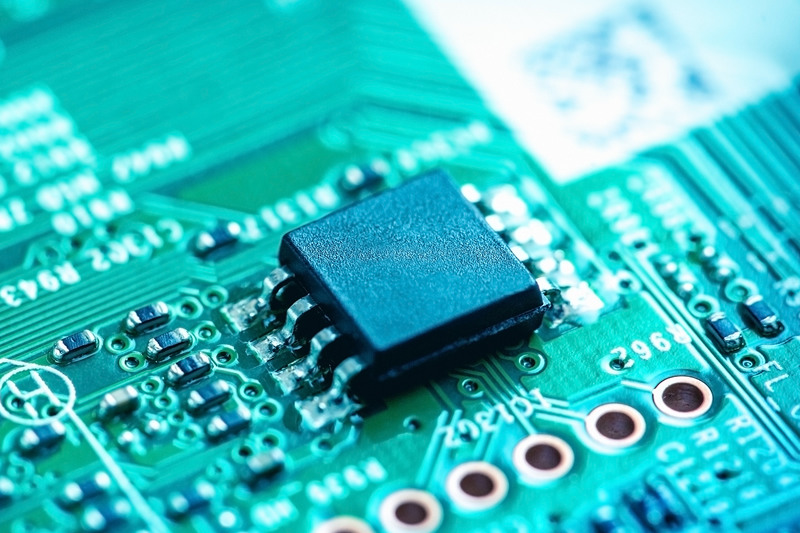
A crystal oscillator is an electronic component widely used for clock and frequency control in electronic devices. In the classification of crystal oscillators, active crystal oscillators and passive crystal oscillators are two common types. They have significant differences in structure, working principle, and application fields.
Structure and working principle:
An active crystal oscillator is a device that integrates a crystal oscillator and an amplifier. It consists of a crystal oscillator and an amplifier. A crystal oscillator is composed of a crystal and a capacitor, and when a voltage is applied, the crystal produces mechanical vibration. This vibration is amplified by an amplifier and output as a stable clock signal. Active crystal oscillators typically require external power supply.
Passive crystal oscillator refers to a crystal oscillator device that only includes a crystal oscillator and does not include an amplifier. It is only composed of crystals and capacitors, without an internal amplifier. When a voltage is applied, the crystal oscillator generates mechanical vibration and directly outputs the oscillation signal. Passive crystal oscillators do not require external power supply.
Stability and accuracy:
Due to the presence of amplifiers in active crystal oscillators, they can amplify the amplitude of oscillating signals, thereby improving signal stability and accuracy. An amplifier can compensate for signal attenuation in a circuit and eliminate the influence of external interference on oscillating signals. This enables active crystal oscillators to have higher accuracy and reliability in frequency control and clock synchronization.
In contrast, passive crystal oscillators do not have internal amplifiers and output weaker oscillation signals. Therefore, its stability and accuracy are relatively low. Passive crystal oscillators are more suitable for applications with less stringent frequency requirements, such as simple timers and basic electronic devices.
Power consumption and cost:
Due to the need for additional amplifier circuits, active crystal oscillators typically have higher power consumption than passive crystal oscillators. Active crystal oscillators require external power supply and the amplifier circuit consumes a certain amount of energy. Therefore, in some applications with lower power consumption requirements, passive crystal oscillators may be more suitable. The KYX brand crystal oscillator produced by Kaiyue Xiang has such characteristics.
In addition, the manufacturing cost of active crystal oscillators is relatively high because it requires additional amplifier circuits. Passive crystal oscillators are simpler and have relatively lower manufacturing costs.
Application areas:
Active crystal oscillators are commonly used in applications that require accurate clock and frequency control, such as computers, communication equipment, precision instruments, etc., due to their high precision and stability. They can provide high-precision clock signals, ensuring the stability and accuracy of device operation.
Passive crystal oscillators are mainly used in scenarios with relatively low precision requirements, such as household electronic products, ordinary timers, simple electronic toys, etc. In these applications, precision requirements are not high, and passive crystal oscillators have lower costs and are more cost-effective.
Anti interference capability:
Due to the presence of amplifier circuits in active crystal oscillators, they have strong anti-interference ability against external interference. An amplifier can enhance the strength of a signal, making it less susceptible to interference. This is very important for some noise intensive environments or high-frequency application scenarios, as it can ensure the stability of oscillation signals.
In contrast, passive crystal oscillators do not have internal amplifiers to enhance signals, so their resistance to interference is weaker. In environments with strong external interference, passive crystal oscillators may be affected by more noise, leading to a decrease in the stability of the oscillation signal.
Stability of startup time and frequency:
Active crystal oscillators typically have a fast start-up time, meaning the time required from the start of power supply to the output of a stable clock signal is relatively short. This makes them suitable for application scenarios that require startup speed.
The start-up time of passive crystal oscillators is relatively long, requiring more time to reach a stable working state. This means that in some applications that require rapid start-up, active crystal oscillators have more advantages.
Adjustable:
Active crystal oscillators usually have the characteristic of adjustability, and their output frequency can be adjusted through external circuits or control signals. This adjustability makes active crystal oscillators more flexible and adaptable to different application requirements. For example, in wireless communication systems, it is necessary to adjust the operating frequency of the crystal oscillator according to the requirements of different frequency bands, and active crystal oscillators can meet this demand.
In contrast, passive crystal oscillators generally have a fixed frequency and cannot be adjusted in real-time. Their frequency is usually determined by the characteristics of crystal oscillators and cannot be adjusted during use.
In summary, there are significant differences between active crystal oscillators and passive crystal oscillators in terms of structure, working principle, stability, power consumption, cost, anti-interference ability, start-up time, and frequency stability. Choosing the appropriate crystal oscillator type based on specific application requirements is crucial to ensure the performance and stable operation of the equipment. Crystal oscillators play an important role in both high-precision computer systems and low-cost household electronic products, providing stable clock and frequency control for electronic devices.
 Language
Language


 Your location:
Your location:



